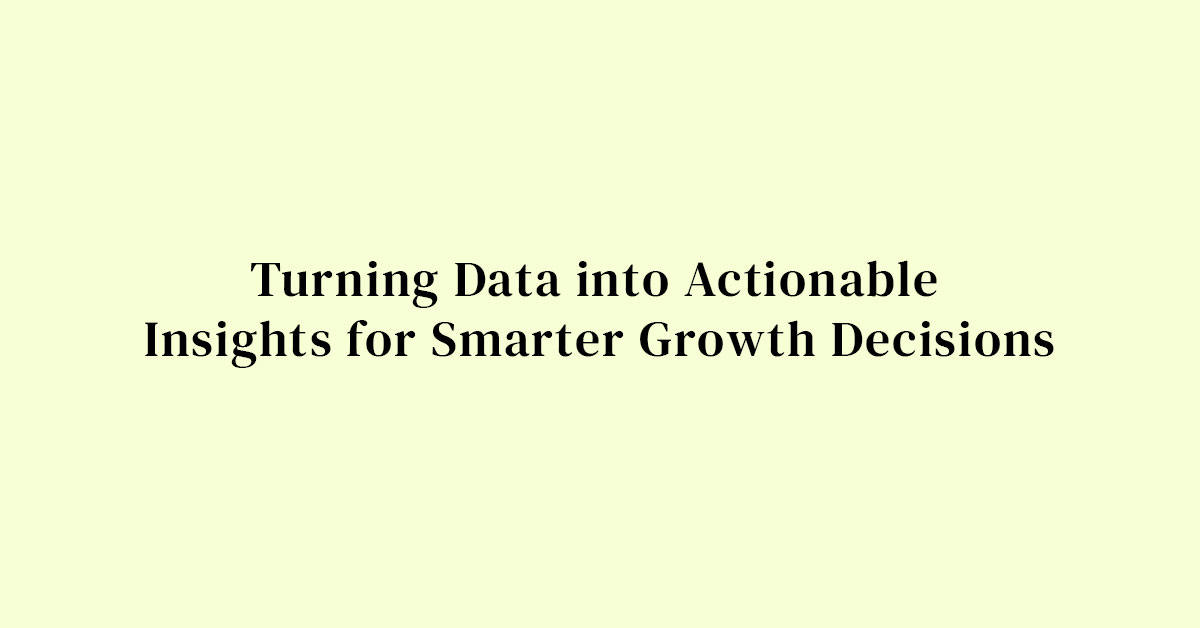Data is everywhere — dashboards, sheets, reports, tools.
But growth doesn’t come from collecting more data — it comes from asking the right questions and acting on what truly matters.
That’s why I don’t just track metrics — I build systems where data drives decisions, and insights drive action.
Not All Metrics Are Equal
Every team has KPIs. But not every team knows:
- Which metrics actually move the business
- What signals to trust (and what to ignore)
- When to zoom out, and when to double-click
I focus on defining North Star metrics that align with:
- User behavior
- Business stage
- Funnel priority
And then structure every team’s work to feed into those.
My Data-to-Action Framework
1. Define What Growth Looks Like
- Start with outcome metrics (e.g., MRR, CAC, retention rate)
- Break down into input levers (e.g., landing page CVR, email open rate, referral %)
2. Build Cross-Functional Dashboards
- One view across marketing, product, sales, and support
- Real-time updates, simple visualizations, action-focused layout
- Automate wherever possible
3. Install Insight Rituals
- Weekly performance check-ins with key owners
- Monthly funnel reviews to spot trends and drop-offs
- Pre-launch metric baselines to track lift post-campaign
4. Test, Learn, Loop
- Hypothesis → A/B Test → Insight → Implementation
- Every insight documented and applied to future plays
- Centralized testing library for team-wide learning
How This Plays Out in Real Workflows
- Identified “scroll depth” as the best predictor of sign-up — redesigned pages based on that
- Tracked heatmap drop-offs → reordered content hierarchy → improved page engagement by 45%
- Found that users who completed onboarding within 2 minutes had 2x retention — redesigned onboarding flow to hit that window
In each case, the insight didn’t live in a spreadsheet — it drove a product or campaign decision.
Principles I Follow
- Track less, act more
- Context > Numbers — insights matter more than raw data
- Build for questions, not for dashboards
- Share data across teams — not just with analysts
Final Thought
Data isn’t the final answer — it’s the starting point.
When used well, it doesn’t just show you what happened — it tells you what to do next.
And that’s where smarter, faster, more confident growth decisions come from.
